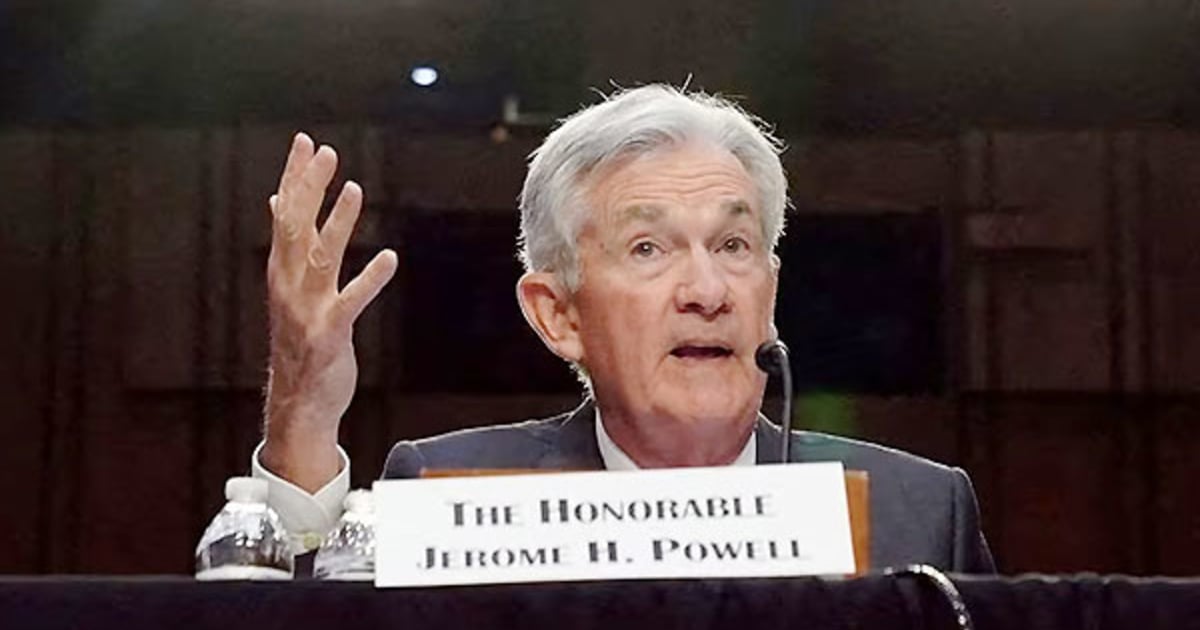
WASHINGTON – The Federal Reserve on Wednesday raised interest rates by a quarter of a percentage point, but indicated it was on the verge of pausing further increases in borrowing costs amid recent turmoil in financial markets spurred by the collapse of two U.S. banks.
The Federal Reserve’s actions raise the prospect of higher borrowing costs for new and used vehicles and other forms of credit, notably mortgages.
The average new-vehicle interest rate rose 2.6 percentage points to 7 percent between February 2022 and February 2023 as the Fed increased its benchmark target 4.5 percentage points during that time, according to Edmunds.
“The Fed’s decision to hike rates by another quarter percentage point will have varying ramifications throughout the economy, but for car shoppers, this won’t be entirely unexpected given the significant climb that interest rates have made over the last year,” Edmunds senior director of insights Jessica Caldwell said in a statement Wednesday.
“A potential light at the end of the tunnel for car shoppers could come in the form of financial incentives from auto manufacturers as inventory continues to build up and vehicles sit longer on dealer lots. Shoppers can’t expect the doorbuster bargains they saw pre-pandemic, but consumers with good credit who do their research might find more favorable financing options heading into the summer season.”
The move set the U.S. central bank’s benchmark overnight interest rate in the 4.75 percent-5.00 percent range, with updated projections showing 10 of 18 Fed policymakers still expect rates to rise another quarter of a percentage point by the end of this year, the same endpoint seen in the December projections.
But in a key shift driven by the sudden failures this month of Silicon Valley Bank and Signature Bank, the Fed’s latest policy statement no longer says that “ongoing increases” in rates will likely be appropriate. That language had been in every policy statement since the March 16, 2022 decision to start the rate hiking cycle.
Instead, the policy-setting Federal Open Market Committee said only that “some additional policy firming may be appropriate,” leaving open the chance that one more quarter-of-a-percentage-point rate increase, perhaps at the Fed’s next meeting, would represent at least an initial stopping point for the rate hikes.
Though the policy statement said the U.S. banking system is “sound and resilient,” it also noted that recent stress in the banking sector is “likely to result in tighter credit conditions for households and businesses and to weigh on economic activity, hiring, and inflation.”
There were no dissents on the policy decision.
The document made no presumption that the battle with inflation has been won. The new statement dropped language saying that inflation “has eased” and replaced it with the declaration that inflation “remains elevated.”
Job gains are “robust,” according to the Fed.
Officials projected the unemployment rate to end the year at 4.5 percent, slightly below the 4.6 percent seen as of December, while the outlook for economic growth fell slightly to 0.4 percent from 0.5 percent in the previous projections. Inflation is now seen ending the year at 3.3 percent, compared to 3.1 percent in the last projections.
The outcome of the two-day meeting this week marks an abrupt repositioning of the central bank’s strategy from just two weeks ago, when Fed Chair Jerome Powell testified in Congress that hotter-than-expected inflation would likely force the central bank to raise interest rates higher and possibly faster than expected.
The March 10 collapse of California-based SVB and the subsequent collapse of New York-based Signature Bank highlighted broader concerns about the health of the banking sector, and raised the possibility that further Fed rate increases might tip the economy towards a financial crisis.
Automotive News F&I reporter John Huetter contributed to this report.